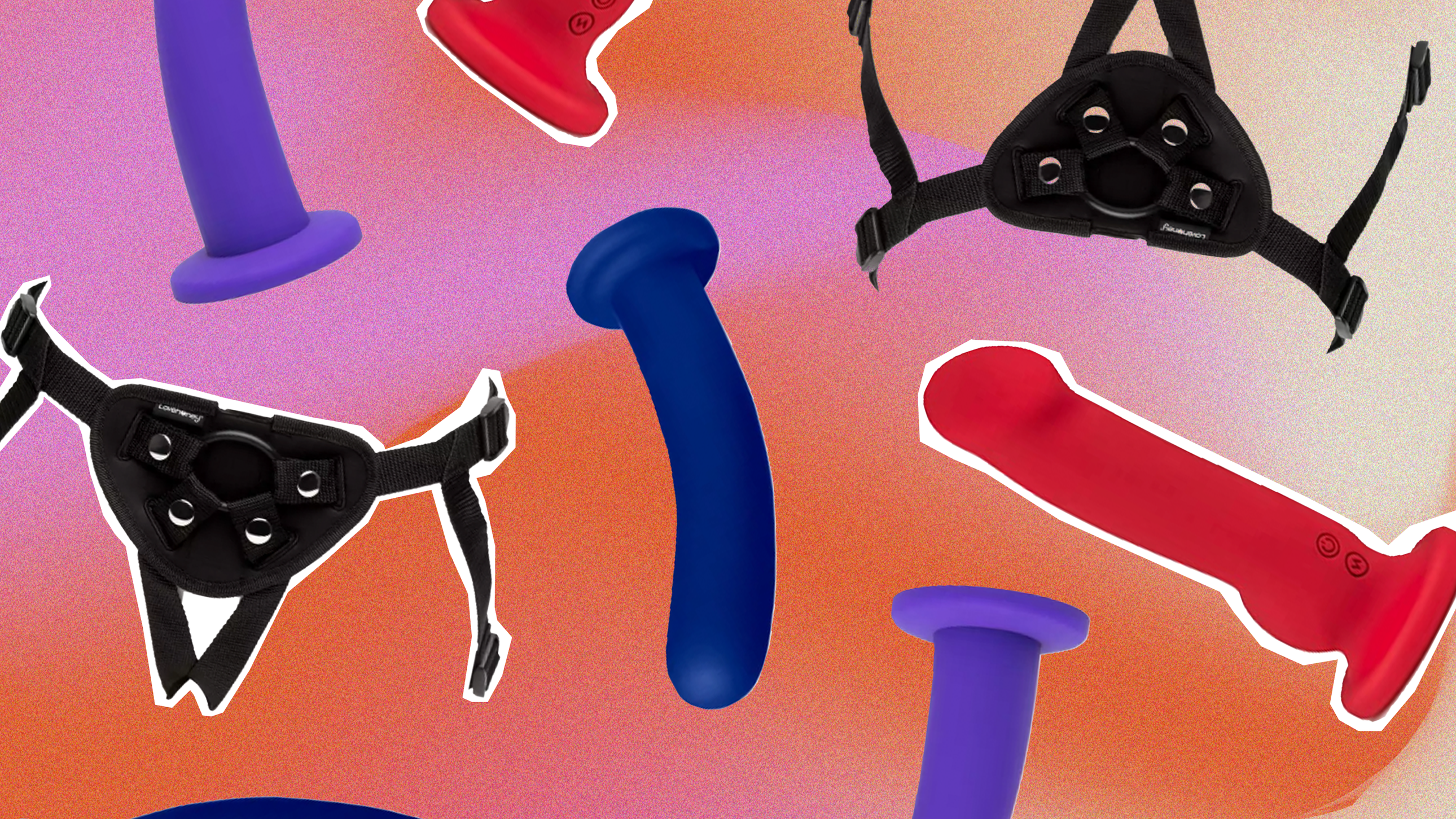
Once you decide on going with a kit or à la carte, your next variable is the dildo itself. When you’re selecting a dildo, it’s best to work your way up to the bigger stuff, per clinical sexologist Rachel Sommer, PhD. “If you’re new to strap-on play, I recommend starting slow and building the momentum as you carry on,” she says. “Start with a small model.”
Look at each option’s girth and insertable length. Consider where you’ll be inserting the strap-on—a partner’s anus or vagina, usually—and chat about what will feel best. You don’t have to go huge to get the most pleasure from strapping or pegging, especially if your partner is new to anal sex. There’s an option for everyone along the spectrum of length and girth. (If you have a penis, you can also wear a hollow strap-on over your member to add length and girth.)
Shape is another important factor. Plenty of dildos are meant to be extremely realistic, with lifelike molding and dual-density designs that mimic the feeling of real penises. That could turn you and your partner on, especially if you don’t have a penis of your own—but if you’d rather keep your bedroom penis-free, plenty of dildos are more abstract. Look for designs that curve up, which will allow you to hit your partner’s prostate or provide G-spot stimulation with ease.
As far as materials go, the answer is clear: Stick with silicone dildos, as anything too hard can be dangerous. “No super-hard dildo material when you are strapping on!” Queen warns. “A wonky thrust can hurt someone if the dildo is glass, metal, stone, and so on.”
Before you start playing, make sure there’s plenty of personal lubricant on hand. Whether you’re using a dildo to penetrate vaginally or for anal play, lube makes things a lot more fun and frictionless. Anal lube is especially important, as the anus doesn’t naturally lubricate itself—and make sure you’re using water-based lube, since silicone-based formulas can actually cause silicone straps to start breaking down.








